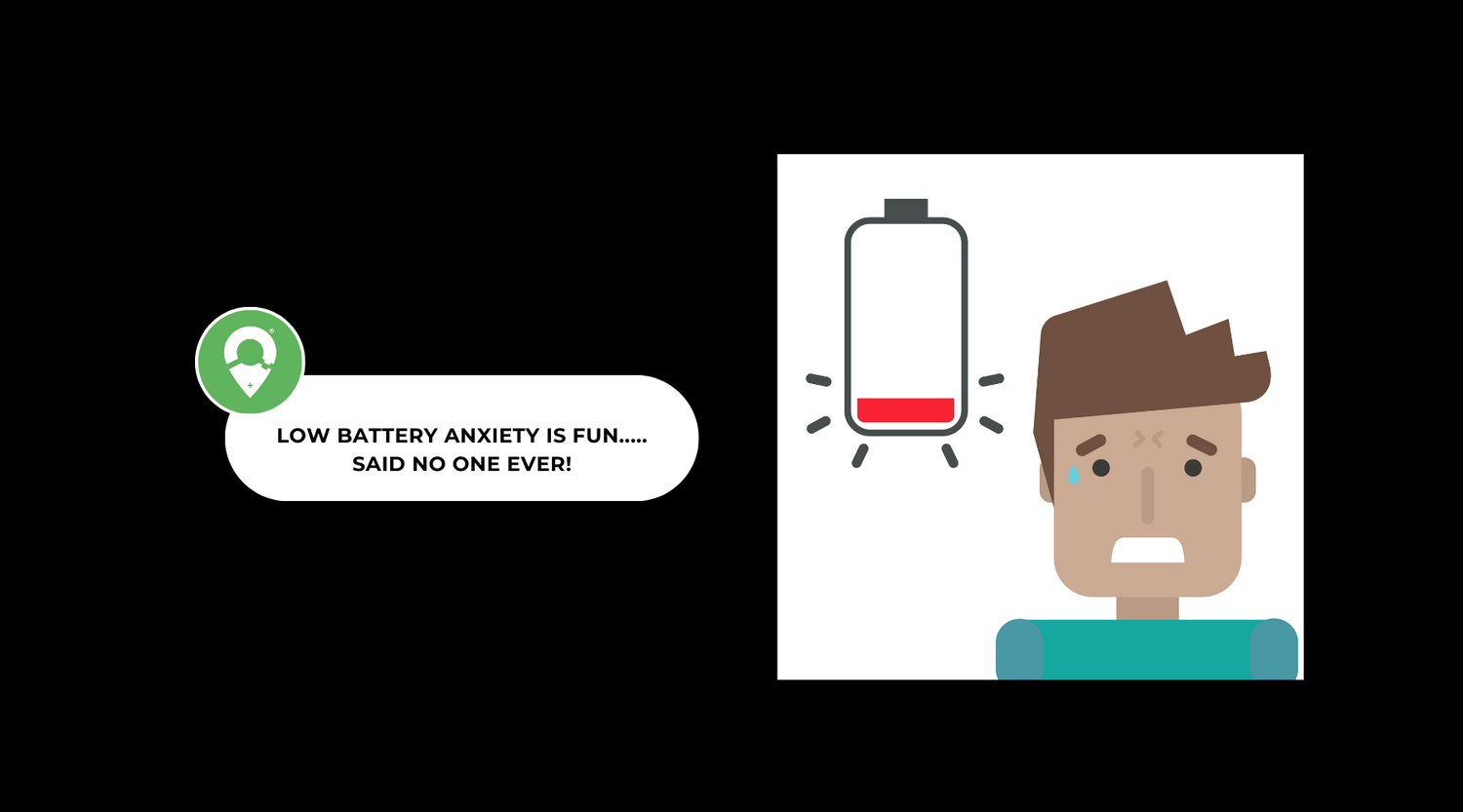In today's digital age our lives are intricately woven with the fabric of technology. From smartphones to laptops, tablets to smartwatches, we rely on these devices to keep us connected, informed, and entertained.
However, there's a lurking anxiety that accompanies these modern conveniences: the fear of running out of power.
We've all experienced that sinking feeling when we glance at our device only to see the ominous red battery icon glaring back at us. It's a moment of panic, especially if we're in the midst of something important or when we're miles away from a charger. The anxiety sets in as we frantically search for an outlet or a power bank, hoping to revive our lifeline to the digital world.
But why does the prospect of a drained battery induce such anxiety? It's more than just the inconvenience of being disconnected; it's about losing our sense of security, control, and access to vital resources. Here's a closer look at the layers of anxiety that accompany the low battery warning:
Dependency on Technology: Our reliance on technology has reached unprecedented levels. We use our devices for communication, navigation, work, entertainment, and even health monitoring. When our devices lose power, it feels like we're cut off from a part of ourselves, leaving us vulnerable and disconnected.
Fear of Missing Out (FOMO): In a hyper-connected world where information is constantly flowing, the fear of missing out looms large. A dead battery means missing important calls, messages, updates, or opportunities. Whether it's a work email, a social media notification, or breaking news, the fear of being out of the loop can be overwhelming.
Loss of Productivity: Many of us use our devices for work or study, making productivity contingent on battery life. When our devices die, so does our ability to complete tasks, meet deadlines, or stay organized. The pressure to stay productive can intensify the anxiety, especially in high-stakes situations.
Safety Concerns: For some, a fully charged phone is more than just a convenience; it's a lifeline during emergencies. Whether it's calling for help, accessing maps for navigation, or contacting loved ones, a dead battery can leave us feeling exposed and vulnerable, amplifying feelings of anxiety and insecurity.
So, how can we navigate the treacherous waters of device power anxiety? Here are a few strategies:
Practice Battery Management: Make it a habit to monitor your device's battery level and charge it regularly. Consider investing in portable chargers or power banks for emergencies, especially when you're on the go.
Set Boundaries: Establish tech-free zones or times during your day to reduce dependency and give yourself a break from constant connectivity. Disconnecting occasionally can help alleviate anxiety and restore balance.
Prioritize Essential Functions: Identify the most critical functions of your device and prioritize them when your battery is running low. This might mean disabling non-essential apps or features to conserve power until you can recharge.
Develop Coping Strategies: Practice mindfulness techniques or engage in activities that help alleviate anxiety when faced with a low battery situation. Remember that it's okay to take a deep breath, step away from your device, and focus on the present moment.
In the end, while device power anxiety is a common phenomenon in our tech-savvy society, it's essential to maintain perspective and find ways to mitigate its impact on our well-being. By practicing mindfulness, setting boundaries, and being prepared, we can navigate the ups and downs of battery life with grace and resilience. After all, sometimes the best connections are the ones we make when we unplug and recharge ourselves.





